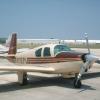A Look Into The Lycoming Factory
-
Members Online
- DonMuncy
- ToddCC22
- thomas1142
- Dialed In
- Utah20Gflyer
- takair
- 802flyer
- ohdub
- Philofficer
- Schllc
- affricate
- BlueSky247
- clh
- hammdo
- pkellercfii
- fastandfar
- hypertech
- AndreiC
- Mathias
- catchman86
- outermarker
- PilotX
- Ameadows82
- Peter T
- Echo
- 201Mooniac
- mooneyflyfast
- tankles
- TCC
- Aaviationist
- PeterRus
- TheAv8r
- jamesyql
- 1967 427
- Ryan ORL
- MattD89
- exM20K
- 47U
- redbaron1982
- 201er
- FlyingDude
- Graf_Aviator
- Aleksei
- PeytonM
- Ricky_231


Recommended Posts
Join the conversation
You can post now and register later. If you have an account, sign in now to post with your account.